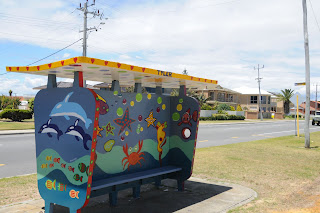I keep on repeating to myself (as a European who's used to live in crowded areas) that the biggest difference between Europe and Down Under is the space. One can see it directly: in 80% of the cases the houses are on one floor with huge gardens in front and in the back .
Melbourne with its 4 millions inhabitants stretches over 50 km, which also gives the people plenty of space. The city has the river Yarra (the ValleyYarra is famous for its wineries) passing trough and the ocean coast too. The center area has plenty of old buildings (most of them in art nouveau) scattered between modern skyscrapers. Some cute old trams are kept as well. Thanks to our great French-Australian hosts we visited several (completely) different (from shick and modern till alternative or covered with graffiti walls) suburbs:
- Camberwell, Fitzroy, South Yarra, Hawthorn
- Southbank, the area with modern architecture and sculptures
- Williamstown (the historical Melbourne Harbour)
The Indian and Greek minorities living here are quiet big down under. The other day we had delicious dinner at one Indian place. The seafood is great and sooo fresh too. I eat every day watermelons and mangoes (grown in Australian sun of course). Some days ago all 4 of us bought new hats at the Victoria Market in Melbourne. Here when the sun comes out (we did not have more than 30 degrees in Victoria), it feels like burning...







































































